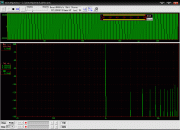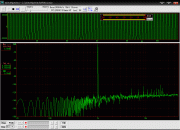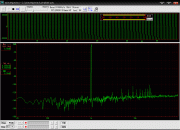pulsar08
New Head-Fier
- Joined
- Mar 19, 2010
- Posts
- 26
- Likes
- 0
Nyquist–Shannon sampling theorem - Wikipedia, the free encyclopedia
Have fun reading that. It essentially boils down to the same thing many people have said. Whenever a signal of audio/image data is interpolated to re-sample/re-size it there will always be some artifacts created. The only way there wouldn't be is if a sinc or jinc function was used but these functions have boundary conditions extending to infinity. A lanczos function is a windowed sinc function or a function with non infinite boundaries and once you use a window of about 5 samples or more it becomes very close to a true sinc function. If you are using foobar2000 you can enable its re-sampler in the dsp preferences and it will use a more accurate interpolation function than the ones the sound card drivers typically have enabled by default.
As others have said the comments about dacs supporting oversampling are a bunch of hype and in truth it degrades the signal. Listening to recordings that are over 44.1 khz has better quality but what point are we able to tell a difference?

Have fun reading that. It essentially boils down to the same thing many people have said. Whenever a signal of audio/image data is interpolated to re-sample/re-size it there will always be some artifacts created. The only way there wouldn't be is if a sinc or jinc function was used but these functions have boundary conditions extending to infinity. A lanczos function is a windowed sinc function or a function with non infinite boundaries and once you use a window of about 5 samples or more it becomes very close to a true sinc function. If you are using foobar2000 you can enable its re-sampler in the dsp preferences and it will use a more accurate interpolation function than the ones the sound card drivers typically have enabled by default.
As others have said the comments about dacs supporting oversampling are a bunch of hype and in truth it degrades the signal. Listening to recordings that are over 44.1 khz has better quality but what point are we able to tell a difference?










